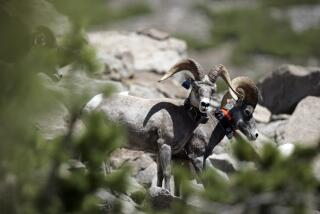Skeleton of giant dinosaur brought to life digitally

Using computer modeling technique involving the equivalent of 30,000 desktop computers, scientists from the University of Manchester re-created a dinosaur’s walking and running movements and tested its locomotion ability for the first time.
Scientists have used computer simulations to re-create the thunderous steps of one of the world’s largest dinosaurs and have concluded that the beast walked at about 5 miles per hour.
In research published Wednesday in the journal PLOS ONE, scientists laser-scanned the skeleton of a 120-foot-long Argentinosaurus and used computer modeling techniques to study how the 80-ton behemoth propelled itself across the landscape.
Named after the South American country it was discovered in, Argentinosaurus is believed to be one of the largest animals -- perhaps the largest -- to walk the Earth, according to scientists.
“We used the equivalent of 30,000 desktop computers to allow Argentinosaurus to take its first steps in over 94 million years,” read a statement from Lee Margetts, an expert in high-performance computing and engineering simulation at the University of Manchester in Britain.
The computer modeling effort combined a variety of scientific disciplines to study the creature’s evolution and locomotive abilities.
“These animals are not like any animal alive today, and so we can’t just copy a modern animal,” said William Sellers, a computational primatologist and reader at the University of Manchester.
“Our machine learning system works purely from the information we have on the dinosaur and predicts the best possible movement patterns,” he said.
Argentinosaurus belongs to that group of dinosaurs called sauropods -- enormous plant eaters that existed for roughly 120 million years before dinosaurs became extinct 65 million years ago.
Sauropods are the largest vertebrates ever to have lived on land, and scientists are increasingly using computer models to determine how they were able to grow so large.
Scientists believe they first appeared in the Late Triassic period but only became the dominant terrestrial herbivores in the Middle Jurassic, according to Martin Sander, a professor of paleontology at the University of Bonn in Germany.
Sander, who authored one of a number of accompanying studies, wrote that the animals’ large size was the result of many different factors. One idea is that animals grow large to avoid predators. Such was the case with modern-day large-mammal ecosystems, Sander said.
“The largest predators generally do not take prey that is significantly larger than themselves, not even by pack hunting,” Sander wrote.
The team that created the walking simulation said it would soon begin working on models to re-create the steps of other dinosaurs, such as Triceratops and Tyrannosaurus rex.







